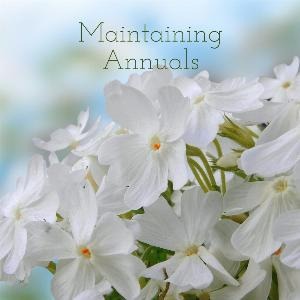After planting your beds, adding a layer of mulch around the plants is one of the best things you can do for your plants and for your self. Mulches conserve moisture, cut down dramatically on weeding, keep the soil temperature more constant, prevent root injury from close cultivation, and help improve the soil and its ability to hold moisture. Apply the mulch thick enough to prevent most weed growth, which is 2 to 3 inches deep. When you first transplant, use Ferti-lome Root Stimulator to get them off to a vigorous start. Then, you can pinch the top off of tall plants to make them bush out and produce more blossoms. As the season progresses and your plant gets leggy or spindly, you can pinch off the tips to make it fill in and bush out again. Also, to keep your annuals blooming heavily, you need to dead head, or pinch off spent blooms. Don’t just pull them off, as this frequently leaves the forming seeds behind, but pinch off the flower down on its stem. If you leave the forming seeds behind, it can signal to the flower that the growing season is almost over, and they may stop blooming. It is especially important to dead head annuals such as snapdragons, verbena, asters, celosia, dianthus, phlox, salvia, and zinnias. Watering deeply helps the plants develop deep, strong root systems that are better able to withstand drought. After watering deeply, allow the soil to dry out slightly before watering again. Frequent, light watering results in yellowed plants with a shallow root system. Feed your heavy blooming annuals every two weeks with Ferti-lome Blooming and Rooting plant food, or, fertilize once a month with 16-16-16. Both methos will give you larger, more abundant, more vivid blooms. Insect damage can be prevented with a systemic insecticide that will protect the plant from the inside out. If you do get insects in your flower beds, check with your local garden center for the proper insecticide. Some chemicals will destroy the blossoms, although they don’t harm the plant itself. Spray when there is no wind, the temperatures are cool, and the foliage is dry.




